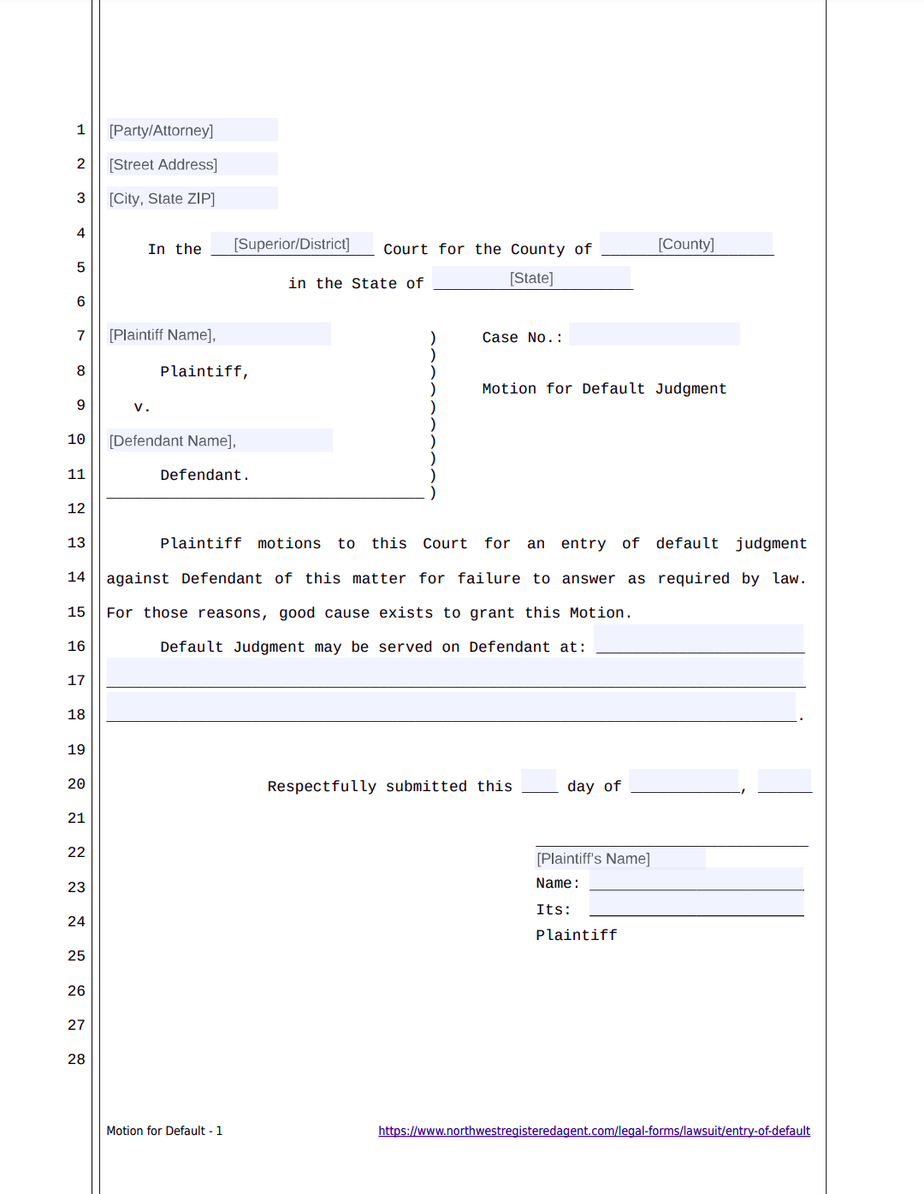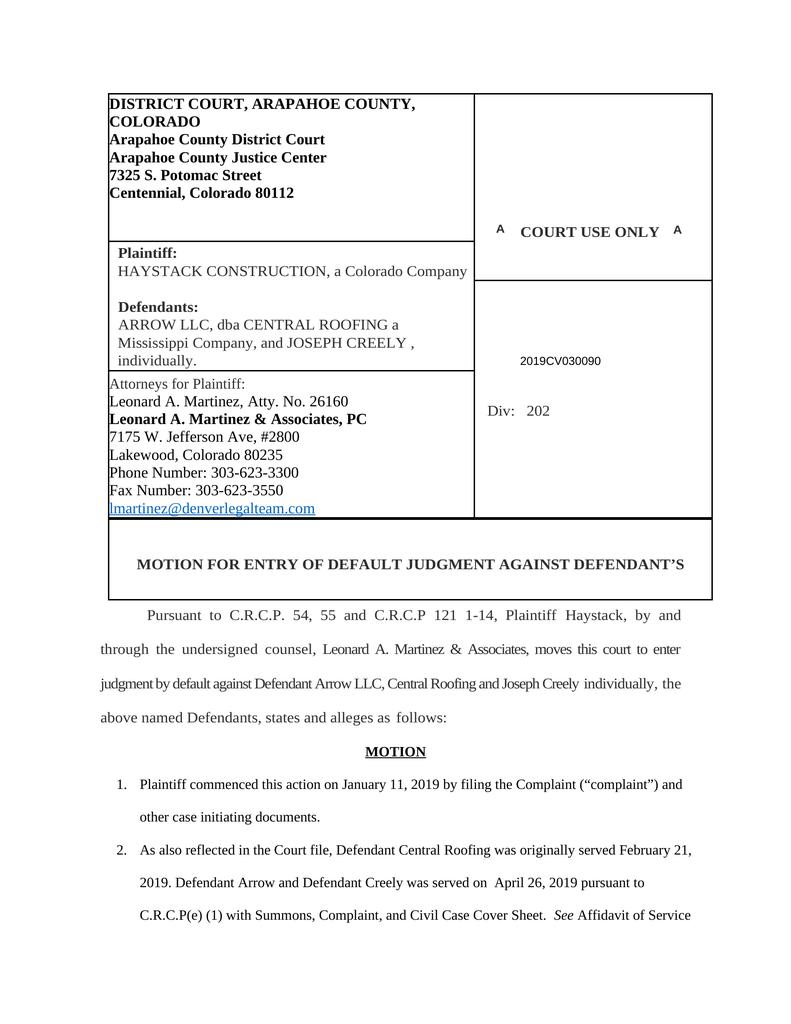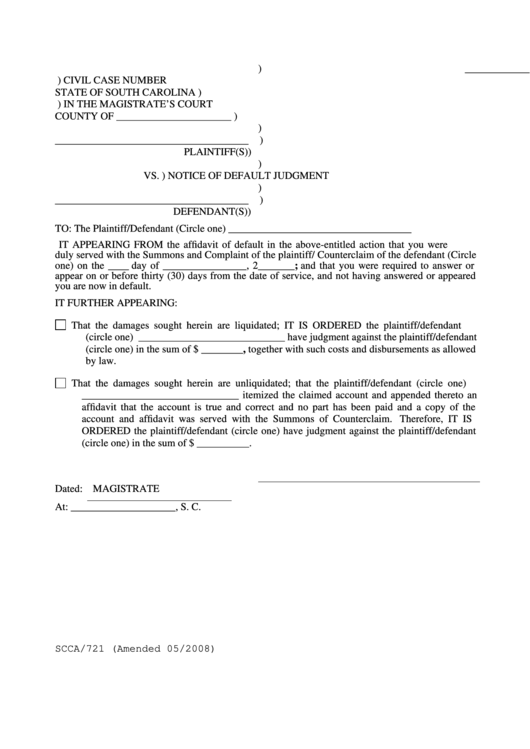A motion for default judgment means you didn’t respond to your debt lawsuit in time, and the creditor or collector is requesting an automatic judgment against you. Getting a default judgment requires two steps. Web motion for entry of default judgment plaintiff (name) requests that a default judgment be entered against defendant (name) pursuant to federal rule of civil procedure 55(b). Before filing your motion, check to see if you can request one. Web court finds that the defendant is in default for answer or other pleading and plaintiff is entitled to a judgment.
The defendant then has a specified time period to refute the judgment, pay on the judgment, or risk contempt of court. Web if he or she doesn’t respond, then you can sometimes file a motion for a default judgment. Web motion for default judgment. Web rule of civil procedure 55 (b) and local civil rule 55.2 to enter default judgment in favor of plaintiff and against defendant(s) on the grounds that said defendants(s) failed to answer or otherwise defend against the complaint. To recover damages for the plaintiff due to the defendant's forfeited admission's of all material fact.
It is therefore ordered, adjudged and decreed that plaintiff Web court finds that the defendant is in default for answer or other pleading and plaintiff is entitled to a judgment. Web rule of civil procedure 55 (b) and local civil rule 55.2 to enter default judgment in favor of plaintiff and against defendant(s) on the grounds that said defendants(s) failed to answer or otherwise defend against the complaint. Web this form can serve as a template when a plaintiff is drafting a motion for entry of default judgment. Web motion for entry of default judgment plaintiff (name) requests that a default judgment be entered against defendant (name) pursuant to federal rule of civil procedure 55(b).
Web motion for default judgment. To recover damages for the plaintiff due to the defendant's forfeited admission's of all material fact. Web this form can serve as a template when a plaintiff is drafting a motion for entry of default judgment. Getting a default judgment requires two steps. Web court finds that the defendant is in default for answer or other pleading and plaintiff is entitled to a judgment. Web rule of civil procedure 55 (b) and local civil rule 55.2 to enter default judgment in favor of plaintiff and against defendant(s) on the grounds that said defendants(s) failed to answer or otherwise defend against the complaint. The true purpose of the entry of a default is to speed the cause thereby preventing a dilatory or procrastinating defendant from impeding the plaintiff in the establishment of his claim. Movant, i.e., the party bringing this motion is _____, (“plaintiff”), who moves the court to enter a default judgment against _____ (“defendant(s)”) pursuant to rule 503 of the. It is therefore ordered, adjudged and decreed that plaintiff Web motion for entry of default judgment plaintiff (name) requests that a default judgment be entered against defendant (name) pursuant to federal rule of civil procedure 55(b). A motion for default judgment means you didn’t respond to your debt lawsuit in time, and the creditor or collector is requesting an automatic judgment against you. Web if he or she doesn’t respond, then you can sometimes file a motion for a default judgment. The defendant then has a specified time period to refute the judgment, pay on the judgment, or risk contempt of court. Before filing your motion, check to see if you can request one. Web a default judgment awards the plaintiff reasonable damages requested in the complaint.
Before Filing Your Motion, Check To See If You Can Request One.
Web a default judgment awards the plaintiff reasonable damages requested in the complaint. Web if he or she doesn’t respond, then you can sometimes file a motion for a default judgment. To recover damages for the plaintiff due to the defendant's forfeited admission's of all material fact. It is therefore ordered, adjudged and decreed that plaintiff
Web Rule Of Civil Procedure 55 (B) And Local Civil Rule 55.2 To Enter Default Judgment In Favor Of Plaintiff And Against Defendant(S) On The Grounds That Said Defendants(S) Failed To Answer Or Otherwise Defend Against The Complaint.
Web court finds that the defendant is in default for answer or other pleading and plaintiff is entitled to a judgment. Movant, i.e., the party bringing this motion is _____, (“plaintiff”), who moves the court to enter a default judgment against _____ (“defendant(s)”) pursuant to rule 503 of the. Web this form can serve as a template when a plaintiff is drafting a motion for entry of default judgment. Web motion for entry of default judgment plaintiff (name) requests that a default judgment be entered against defendant (name) pursuant to federal rule of civil procedure 55(b).
The Defendant Then Has A Specified Time Period To Refute The Judgment, Pay On The Judgment, Or Risk Contempt Of Court.
A motion for default judgment means you didn’t respond to your debt lawsuit in time, and the creditor or collector is requesting an automatic judgment against you. If granted, a default judgment can lead to. The true purpose of the entry of a default is to speed the cause thereby preventing a dilatory or procrastinating defendant from impeding the plaintiff in the establishment of his claim. Web motion for default judgment.









